Collection: James Lloyd Breck

-
Sale
Wood Plaque Premium
Regular price From $99.95 USDRegular priceUnit price per$111.06 USDSale price From $99.95 USDSale -
Sale
Wood Plaque
Regular price From $34.95 USDRegular priceUnit price per$38.83 USDSale price From $34.95 USDSale -
Sale
Wall Frame Espresso
Regular price From $109.95 USDRegular priceUnit price per$122.17 USDSale price From $109.95 USDSale -
Sale
Wall Frame Gold
Regular price From $109.95 USDRegular priceUnit price per$122.17 USDSale price From $109.95 USDSale -
Sale
Wall Frame Black
Regular price From $109.95 USDRegular priceUnit price per$122.17 USDSale price From $109.95 USDSale -
Sale
Canvas Print
Regular price From $84.95 USDRegular priceUnit price per$94.39 USDSale price From $84.95 USDSale -
Sale
Metal Print
Regular price From $94.95 USDRegular priceUnit price per$105.50 USDSale price From $94.95 USDSale -
Sale
Acrylic Print
Regular price From $94.95 USDRegular priceUnit price per$105.50 USDSale price From $94.95 USDSale -
Sale
Giclée Print
Regular price From $19.95 USDRegular priceUnit price per$22.17 USDSale price From $19.95 USDSale -
Custom Text Note Card
Regular price From $300.00 USDRegular priceUnit price per$333.33 USDSale price From $300.00 USDSale
ARTIST: Br. Robert Lentz, OFM
ARTWORK NARRATIVE:
When James Lloyd Breck was a seminarian, the Episcopal Church was an eastern denomination, with very little missionary outreach into the vast territories to the west. Responding to a call for help from Bishop Jackson Kemper, Breck set out in 1841 for a life of self-denial on the frontier. Inspired by the Oxford Movement, he believed that the ancient Christian model of a monastic core-group with a Bishop at its center was the best way to organize missionary work. At Nashotah, Wisconsin, he helped found such an institution. Beginning as a brotherhood to evangelize the country around it, Nashotah House soon became a seminary to train missionary priests.
Moving west to Minnesota, Breck began a mission among the Chippewa at Gull Lake, and opened another missionary center at Faribault. There he founded schools, including Seabury Divinity School, and prepared the way for the establishment of the first cathedral in the Episcopal Church. His last years were spent in Benicia, California, where he opened yet another mission with schools and a circuit of preaching stations. He died there on March 30, 1876, after a brief illness.
It was said of Breck, "The Master’s word, 'Go ye into all the world,' was in his ears; its force and meaning in his heart. And so he went into the wilderness, like John the Baptist and other heroes and martyrs of the church, whither the Spirit led him." An Archbishop of Canterbury called him "The Apostle of the Wilderness," and this title is written in Greek above his shoulders in this icon. He is shown holding the Red Chapel, the original chapel at Nashotah House. Today, his work continues through institutions, which he founded: two seminaries, a school, numerous parishes, and extensive work among Native Americans. He is commemorated in the calendar of the Episcopal Church.
- Lentz collection:
-
Ecumenical Icons
Breck was born 27 June 1818 near Philadelphia, and attended high school at the Flushing Institute, founded by William Augustus Muhlenberg, who inspired him to resolve at the age of sixteen to become a priest. He went on to attend the University of Pennsylvania, and then General Theological Seminary in New York City. There he heard an address by Bishop Jackson Kemper, appealing for priests to go west and plant churches on the frontier. In 1841, Breck and two classmates, having graduated and been ordained deacons, went to Wisconsin under the direction of Bishop Kemper, to set up a religious community that would supply ministers to the surrounding areas, and would train students for the ministry.
Breck and his companions (John Henry Hobart, Jr, son of Bishop Hobart of New York, and William Adams, from Dublin) intended a Brotherhood that would function very much along monastic lines. Although none of the brothers took solemn vows, they agreed to place their money in a common purse, to live under the direction of a Prior, and to devote regular times each day to communal worship. Kemper found them a Prior, a priest already in Wisconsin, but he was not in sympathy with the idea of a Brotherhood, and soon resigned. Breck was asked to take over. Much to his disappointment, the idea of the Brotherhood did not survive, as various brothers withdrew until Breck was the only one.
On the other hand, they were highly successful as a seminary preparing students for ordination, and highly successful in establishing parishes and ministering to the local settlers. They were for the most part the first ministers to reach the area, and were enthusiastically welcomed. Breck in one of his letters home describes the establishment of a parish where the farmers built a church, and a lay-brother from the House (a theological student from the seminary) was ordained deacon and became their regular pastor. As a lay-brother, he had for the previous two and a half years walked to the Church every Sunday to preach and hold services, twelve miles each way.
On 5 December 1842, Breck wrote to his mother as follows:
You have learned that we are in our new quarters, and are really beginning to feel that we are in a Monastery. We have both cleric and lay brethren, but as yet few in number. The internal arrangement of our house is becoming more and more perfect. We have spent all, or about all, the money that Brother Hobart collected in the East, in the purchase of our land and the building of a small frame house; and now we are poor, but the poor of CHRIST, and therefore have nothing to apprehend. Owing to our poverty we have to get along as best we may.
The students boarding with us are all theological, that is, those whom we intend for the Ministry. They are chiefly young men, sons of the farmers, and all communicants of the Church, save one that is too young, but is otherwise a Christian lad, who does a good deal of our housework. Our students, like ourselves, are poor, but not the less worthy for that. They seek the Ministry, but are unable to attain to it without aid; and what aid can we give? We have a house; for this we pay no rent -- it belongs to the Church, and so do we. We have land; that is in like case; it is fertile beyond all calculation (that is to an Eastern man). They work four hours a day for their board and washing -- and we give them their education without cost. Thus their clothing is their only expense; and to enable them to purchase this, we shall give them six weeks vacation during harvest, when they can earn the highest wages. In the winter they can split rails, for fencing in the spring. Our other students, not lay brethren of our House, will board with families nigh at hand, and pay for their tuition.
Brother Adams and myself work four hours, except when we are teaching or doing Missionary labor. We must all work for our board. This is the only way in which they will feel that it is their duty to labor and study, and the only way in which our people will feel their duty to the Church, and to ourselves as the clergy of the same.
We rise at 5am. Matins at 6. The Morning Service of the Church at 9. On Wednesdays and Fridays, the Litany at 12. On Thursdays the Holy Eucharist at the same hour of 12. The Evening Service of the Church at 3, and Family Prayer or Vespers at 6:30 or 7 pm.
Our students labor between 7 and 9 in the morning, and 1 and 3 in the afternoon.
Now that we are in a house of our own and the people see our readiness to undergo things unpleasant in themselves, they are made ready to bestow a portion of their produce on us.
I have just returned from visiting the Swedish settlement, where I went to baptize the first American-born child in it. On arriving at the house of Mr. Unonius, I found almost the entire settlement collected. It was a cause of joy and thankfulness to minister to these people, members of the Swedish Episcopal Church.
At Lisbon we have twenty-seven communicants. The parish, organized by the Bishop, was, with his permission, called "St. Alban's," after the first English martyr.
(The letter quoted is taken from the book JAMES LLOYD BRECK: APOSTLE OF THE WILDERNESS, ISBN 1-881648-00-1 hardcover, 1-881648-01-X paperback, written by the subject's brother, the Rev. Charles Breck, and published in 1992 by Nashotah House.)
In 1850, it was agreed that Nashotah House (cf. James de Koven, 22 March) would become simply a Seminary, with no Brotherhood attached, and that Breck, with others so disposed, would go to Minnesota, then also under the jurisdiction of Bishop Kemper, there to found a Mission for preaching the Gospel, to found schools and a seminary, and to make another attempt at establishing a Brotherhood along monastic lines that would undertake these tasks as a group. Breck left for Minnesota in June 1850, accompanied by two other clergymen and a theological student from Nashotah, with another to join them in the fall. They settled first at St Paul, Minnesota, and established stations there for preaching and administering the Sacraments. Later, Breck went to Crow Wing and began a mission work among the Indians there. At Faribault, he founded Shattuck Military Academy for high school boys and St James School for younger boys, and St Mary's School for girls, and Seabury Divinity School for the training of students for ordination. Sometime in the 1940's, I think, Seabury was merged with Western Seminary in Evanston, Illinois, to form Seabury Western Seminary (in Evanston). The other schools remain at Faribault, and when I was last there were still flourishing. Faribault was the site of the first cathedral of the Diocese of Minnesota.
In 1867, Breck left Minnesota and settled in Benicia, California, north-northwest of San Francisco and north of Berkeley, on the eastern shore of the Bay. There he founded St. Augustine's College and Grammar School, and St. Mary's Hall. There was a Seminary attached, which is no longer operating, but the schools, I am told, are still operating. He died in Benicia in 1876. The 1976 edition of Lesser Feasts and Fasts (though not the more recent editions) explicitly states that he died on 2 April, and this is his date on the Episcopal Calendar. However, his brother's biography of him gives the date as 30 March, as does the Journal of the General Convention for 1877, and it is on this date that he is commemorated at Nashotah House. Why the discrepancy, I have no idea.
—Excerpts from a brief biography by James Kiefer (from the Episcopal Calendar)
Additional Items Our Customers Like
-
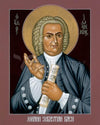
Johann Sebastian Bach (by Br. Robert Lentz, OFM)
-
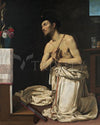
St. Dominic in Penitence (by Museum Religious Art Classics)
-
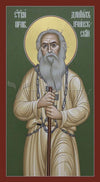
St. Daniel of Achinsk (by Br. Robert Lentz, OFM)
-
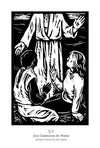
Women's Stations of the Cross 15 - Jesus Commissions the Women (by Julie Lonneman)
-
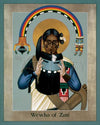
We-wha of Zuni (by Br. Robert Lentz, OFM)
-
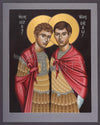
Sts. Sergius and Bacchus (by Br. Robert Lentz, OFM)


















